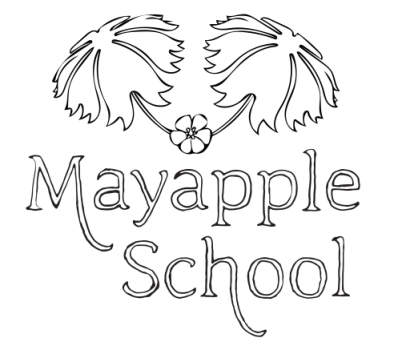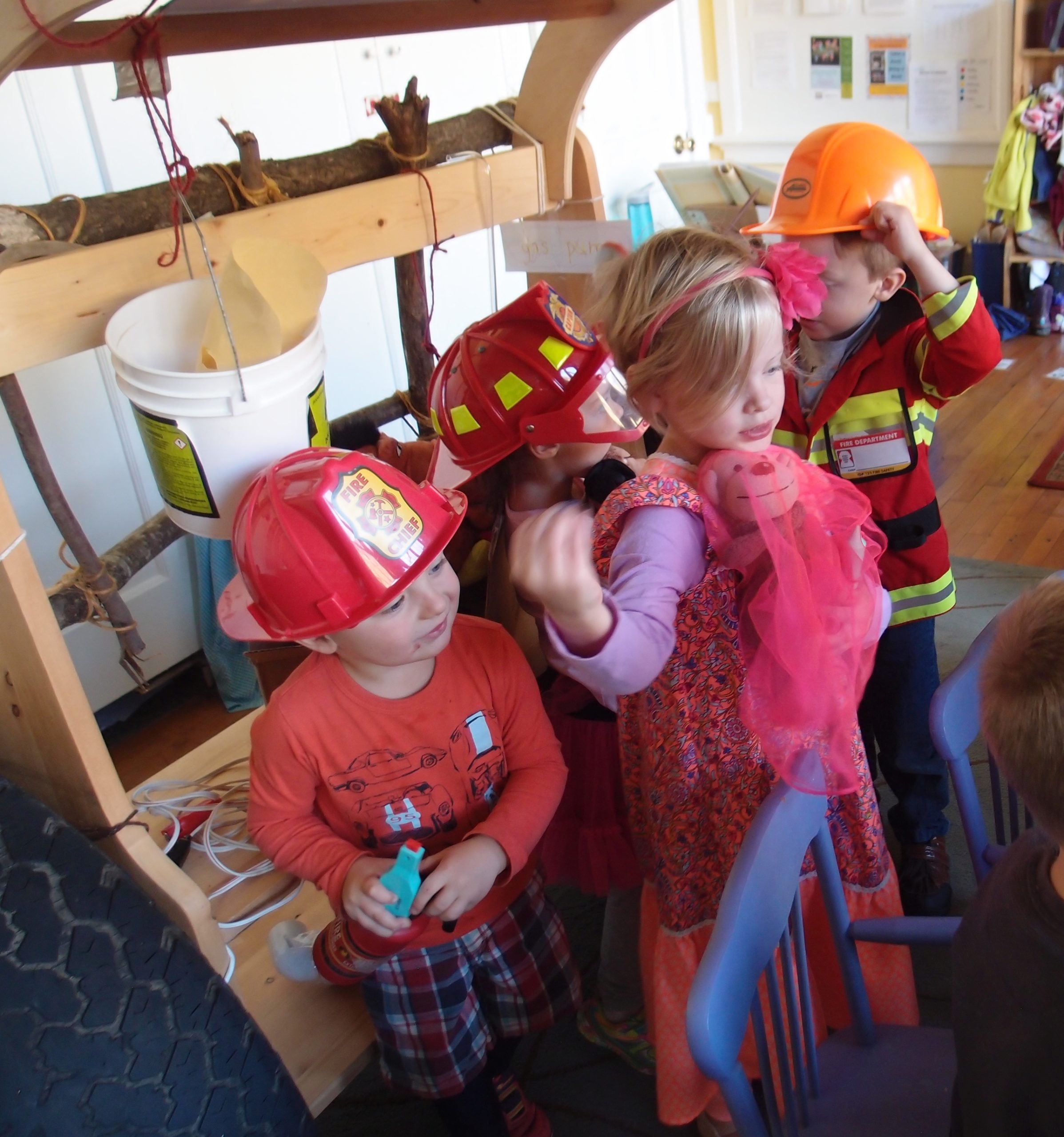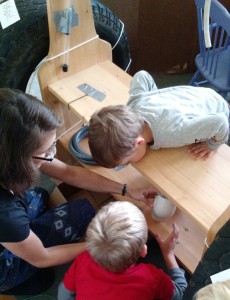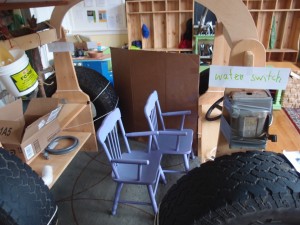Our fire truck has been at the heart of hours of pretend play in our classroom. In fact, there isn’t a single child in our classroom that hasn’t spent some quality make-believe time in there. There’s more to this truck than meets the eye, and in the next few posts, I’d like to share just what that “more” is. Not into fire trucks? Don’t worry. This recipe yields creative, imaginative, dramatic play no matter what the subject matter is.
Our recipe has three parts:
- building background knowledge, which I wrote about in an earlier blog post, and:
- setting the stage and effectively using and making props
- planning, communicating, and evaluating pretend play roles and scenarios
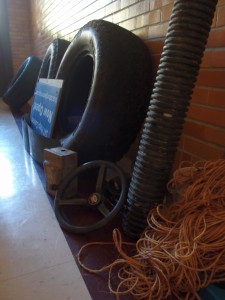
- Teachers help students set the stage and effectively use or find props to enhance their dramatic play and communicate to others what they are doing. At its core, pretend play is essentially a literacy activity. Speaking, listening, writing, and body movement can be important methods of communication during pretend play, and props can be added to that list. When children play pretend, they substitute one item for another. One item becomes another in the minds of the players, even though it physically does not change. For example, an oatmeal canister with a spigot on the top IS a fire extinguisher in the minds of the players, even though really it is still an oatmeal canister. The symbolic imagery and logic building used in pretend play is very similar to the skills students use to understand that the symbols we know as the alphabet actually stand for certain sounds. A successful game of pretend play is all about communication, and props can help.
- The most sophisticated props are actually the least fancy. The preschooler pretending a log is a baby is using a much more sophisticated thought process than the preschooler who is using a life-sized, life-like, plastic baby doll with movable limbs to stand in for a baby. Pretend play beginners often need fancier props that really do look like the real item, while pretend play experts can often make greater leaps in what they can use to stand as a symbol for something else. Since The Mayapple School is a multi-age and multi-ability classroom, we like to have props that cover the whole spectrum, from life-like to totally symbolic.The tires on our truck are actual truck tires, but the entire engine is symbolized by one coiled gray hose.
- All of the students need to know what the props are, which means that the students need to be the ones to make the props. The more symbolic the prop, the more necessary this is. If teachers had stayed after school one day to put together the truck, then told the children what each part was, some of the children would forget. Yes, the truck would still be played with and the children would likely have been delighted upon arrival that morning. But would the truck have become REAL, the way it is now? Probably not. Yes, it’s taken weeks for us, as a class, to build this truck. But working together on our common goal has only helped our classroom community grow.
- Teachers help students plan, communicate, and evaluate their pretend play roles and scenarios on the road to pretend play independence. (Yes! Metacognition. Even preschoolers are doing it!)
- Yes, I absolutely believe that preschoolers should be given opportunities to play without adult interference and prompting. There are entire mornings where students enact a pretend play scenario in the fire truck, and no teacher helps the play along or even attends to it beyond keeping an eye on the action for rules and safety purposes, which may require only the briefest of interruptions.
- However, it is also appropriate to deliberately teach and practice pretend play skills to students during the pretend play. We do this intentionally each week in what we call our “Play Together Game,” which I’ll be writing about on The Mayapple blog in the future. During these play sessions, teachers record the action and briefly review it before the next play session. Then, students decide what they would like to do differently or the same. Teachers “time out” the game if needed, to review or learn certain rules or play techniques. Beyond safety rules, some of the richest skills we deliberately teach are: watching play to figure out what is already happening, so student can enter play in a way that enriches it instead of disturbing it; saying “yes, and” to keep play going; and allowing oneself to be “caught” or other struggle or problem to develop, and then working to solve it. Teachers also encourage student narration by asking questions about student actions and props. At the end of the play session, each child has the opportunity to say what they liked or didn’t like about their role in the play.
- Enforce the expectation or rule that each child gets to choose his or her own role in the pretend play scenario. If one of your more timid preschoolers voices that she wants to be the siren, but another child shouts, “No. I’m the siren. You have to be someone who catches on fire,” the teacher needs to step in and help them figure out how they both can be the siren if they can’t figure it out by themselves. Agreeing to the demands of another child is not always a bad thing, and in fact pretend play usually does hold a lot of give-and-take. But when a child’s role is dictated by another rather than self-chosen, she takes much less ownership over the play scenario and has less incentive to effectively use her pretend play skills or even to play at all. All children then lose out.
At The Mayapple School, we believe that pretend play is at the heart of the magic of childhood. Children need to play and cannot be stopped from seeking out play because it is necessary for proper development of the whole child, such as in areas like literacy, self-control, building empathy, problem solving, and more.
What about you? How do you facilitate pretend play in your classroom or at home? Post a comment to share.
Or, Wish your child had the opportunity to take part in Fire Truck Building and other Mayapple School shenanigans? Learn about enrollment here.
